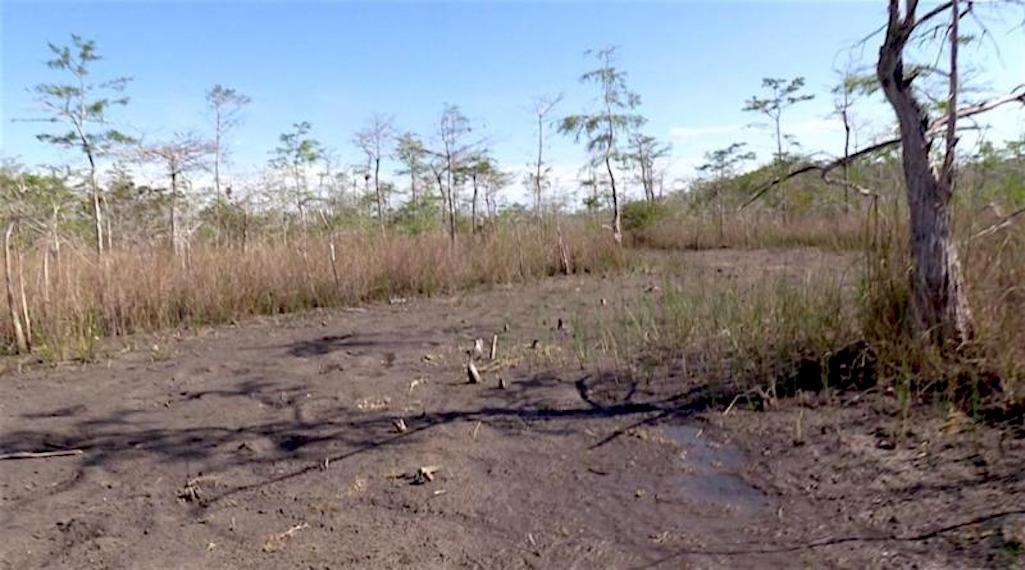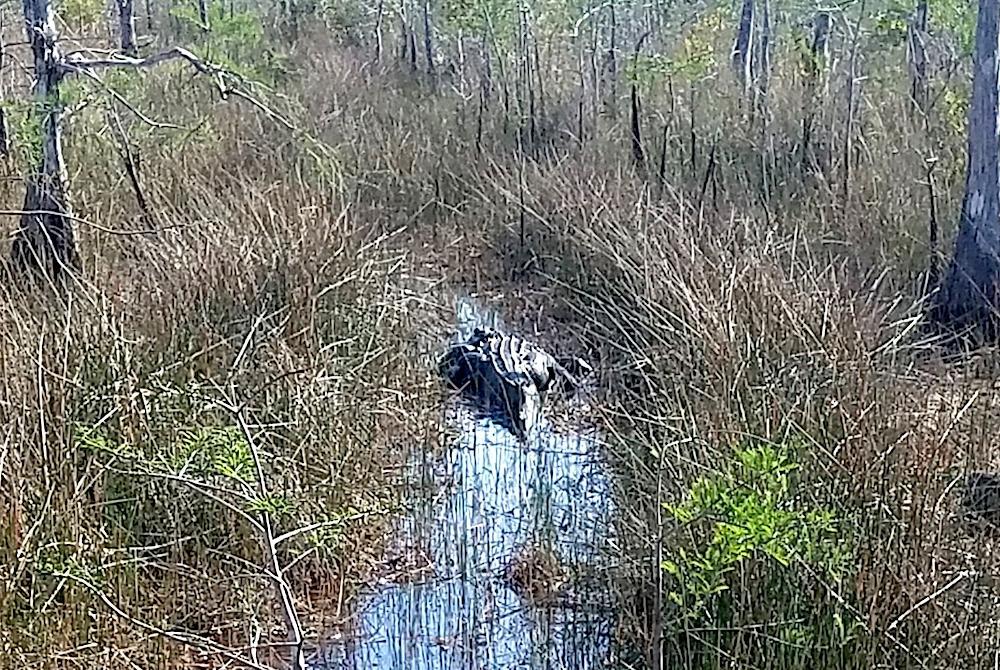
Some impacts from Burnett Oil's 2017 and 2018 exploration in Big Cypress were highly visible in 2020/Kurt Repanshek file
Four years after an oil company began to search portions of Big Cypress National Preserve for recoverable oil deposits, but before restoration work on damaged wetlands could be completed, the National Park Service is now proposing to alter the restoration requirements.
Under the permit requirements Burnett Oil Co. agreed to in 2016 so it could conduct exploration work in the preserve that borders Everglades National Park in Florida, the company was supposed to restore on a daily basis "ruts, depressions, and vehicle tracks resulting from field operations," and field reclamation of impacts was to begin immediately as the survey continued.
"Soils will be decompacted and returned to match the original grade," the Park Service noted among the four dozen mitigation requirements Burnett was to meet.
The exploration work was conducted during the dry seasons of 2017 and 2018. When staff from the National Parks Traveler visited the preserve in March 2020, impacts left by the heavy exploration equipment rippled across the landscape. In some areas, we walked through ankle-deep water cupped in some of the impressions left behind by the “vibroseis” trucks that can weigh 30 tons.
Those ponderous trucks are used to send, in layman's terms, shock waves through the subsurface. Geologists who record the waves' measurements use them to identify oil deposits.
Even though there was no exploration work in 2019 or 2020, some of the resulting vibroseis tracks, 20 or more feet wide in places, stretched across miles of the preserve's marl prairie. Some sections of these “seismic lines” were regaining their vegetative cover in early 2020, but others bore rutted troughs unnaturally holding water, and certain sites were practically devoid of vegetation despite the preserve’s subtropical climate and highly diverse botanical collection.

This alligator, estimated at 10 feet long, found the standing water in a seismic line a comfortable place to rest/John Meyer
As the Traveler noted in March 2020, you can’t think too narrowly when assessing the impacts of what has been done to the surface of Big Cypress. The preserve is key to the health of the greater Everglades ecosystem, a sprawling area of South Florida that has been cut down, divided, drained, and developed for the past century. This ecological upheaval has significantly and repeatedly interrupted the sheet of water that flows from Lake Okeechobee through the “river of grass” down to Florida Bay, Biscayne Bay, and out west to the Ten Thousand Islands and Florida's west coast, impacts that now the state and federal governments are trying to reverse with a billion dollars worth of restoration projects.
According to the National Parks Conservation Association, Big Cypress contributes an estimated 40 percent of the water to the “river of grass” that nourishes the greater Everglades ecosystem as it flows out to Florida Bay and the other estuaries.
A good chunk of the billions of dollars being spent on Everglades restoration has been used to raise portions of the Tamiami Trail, the road also known as U.S. 41 that connects Tampa to Miami, to allow water to flow unimpeded in places to the south. Meanwhile, the east-west running seismic lines created by Burnett Oil constitute smaller, but nonetheless significant, impediments to the water, say conservationists.
But now the National Park Service says too much time has transpired for Burnett to complete the restoration and mitigation work as originally required.
"Reclamation work was performed immediately after the survey’s completion, but a requirement for wetland mitigation remained," the Park Service said Monday in a release proposing to update the original restoration plan. "The original impacted trails now have mature, native, wetland vegetation, such as cypress trees, and habitat for some of the preserve’s most treasured resources. Getting access to and performing any work to restore soil contours in the original location would cause substantial impacts to these now fallow trails."
According to the Park Service, nearly 111 miles of preserve, encompassing almost 202 acres, bear impacts from the exploration work. Under the proposal now open for public comment, Burnett Oil would, instead of restoring those impacts, restore natural water flows and native vegetation on roughly 272 acres in the preserve's Bear Island unit.
"The revised plan would require the company to regrade dikes, ditches and swales; remove invasive and nuisance plants; and plant native trees," the Park Service said.
According to the proposal, this restoration work would transform former farmlands into landscapes with "qualities and functions similar to the original qualities and functions of the wetlands that were impacted by (Burnett Oil's) seismic exploration surveys. The restored landscape should be seasonally flooded with no human structures such as roads, berms, or ditches affecting hydrology. The plant community should resemble the nearby deep-water swamp dominated by cypress and the surrounding graminoid and cordgrass marsh system. Seasonal flood waters should be able to move freely as sheet flow."
The work, if approved, would be conducted during the upcoming dry season at Big Cypress.
Public input on the proposal is being sought through December 7. The proposal can be found here, and comments can be made at the same site.
Meanwhile, the National Park Service has not yet released either an environmental assessment or a more detailed environmental impact statement on Burnett Oil's request to drill for oil in areas where it conducted the exploration back in 2017 and 2018. That drilling request called for two well pads supporting a horizontal drilling project that could tap multiple wells.
Matthew Schwartz, executive director of the South Florida Wildlands Association, told the Traveler back in February that the company's proposed pad locations were along the Sunniland Oil Trend, which the Collier Company, which owns the mineral rights, says is "a well-defined, onshore oil reserve stretching from Fort Myers to Miami" and which runs through the national preserve. Since oil was first discovered in that formation in 1943, "eight commercial oil fields have produced more than 120 million barrels of oil at some of the highest onshore per-well flow rates in the country," the company notes on its website.
In supporting documents Burnett filed in seeking a required 404 environmental permit from the state of Florida, the oil company said it was proposing to use directional drilling (aka horizontal drilling) to tap oil reserves. The company's proposed road alignment to the pad seeks to avoid impacting habitat used by state- and federally-listed floral and faunal species, the document said. Overall, the project proposal "is designed to avoid significantly degrading" Big Cypress, it added.

 Support Essential Coverage of Essential Places
Support Essential Coverage of Essential Places



